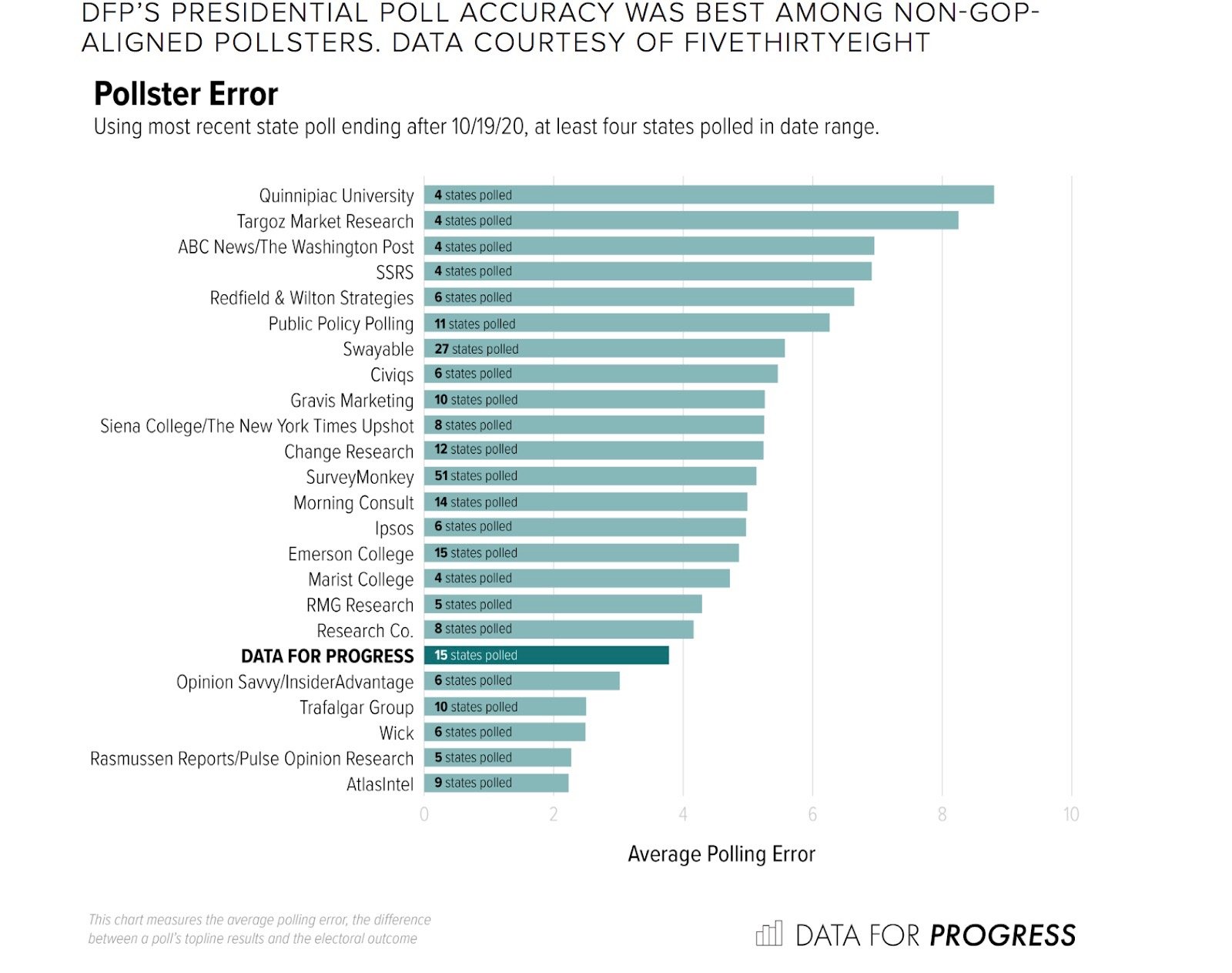Providing Best-in-Class Polling, and Electing the Next Generation of Leaders
In 2020, our polling was rated more accurate than the New York Times. In Iowa, The Economist’s G. Elliot Morris found that Data for Progress was the most accurate pollster in the state’s caucus. Moreover, JHK Forecasts found us to be the best pollster in the entire Democratic primary. These results drove analysts to take our work far more seriously.
Our polling wasn’t just effective in the Democratic primary — we were also more accurate than other pollsters in the 2020 general election. FiveThirtyEight’s Nate Silver found that not only did Data for Progress conduct more general election polls than other polling providers, our polls had a below-average error rate (lower than the New York Times and the Washington Post).
Our polling retrospective, released in May 2021, backs this up, finding that we were the most accurate pollster in the final two weeks of the election among non-GOP-aligned pollsters. As our retrospective explains, we’re continuing to improve our survey accuracy by experimenting with cutting-edge new ways to sample and weight respondents.
As we continuously work to improve our methodology, our polling remains best-in-class. Our analysis finds that in the June 2021 New York City primary, DFP polling outperformed every other poll, with a lower error rate and more races polled than any other pollster.
We’re using our polling to elect the next generation of leaders. In the 2020 New York primary, our polling predicted strength for Jamaal Bowman, Mondaire Jones, and Ritchie Torres — helping these candidates raise more money, attract support from progressive groups, and connect with voters. And in June 2020, all three won! (Not to mention, Bowman, Jones, and Torres have all written for our blog, too).


